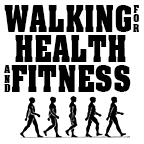In episode 20 of the Walking for Health and Fitness Podcast, I discuss walking and its positive effect on blood circulation in the legs.
I cover three main point in this podcast,
Part 1: Walking’s positive impact on circulation
Part 2: Increased Blood Flow and the Effects on the Veins
Part 3: Walking and Adaptive Remodeling of the Leg Veins
Also in the episode will be the walking insight of the week from my Walking Logbook Journal, and exciting news about my upcoming book, Walking Works.
Walking benefits blood circulation in the legs by engaging the leg muscles in rhythmic contractions, acting as a natural pump that facilitates the flow of blood back to the heart. This muscle action, coupled with the increased heart rate during physical activity, enhances the efficiency of the cardiovascular system, ensuring optimal oxygen and nutrient delivery to the leg muscles and surrounding tissues.
As walking requires constant movement, it helps prevent blood from pooling in the veins, reducing the risk of clot formation and promoting venous return. Furthermore, the overall cardiovascular benefits of walking contribute to healthier blood vessels, improving capillary function and reducing peripheral resistance, all of which collectively support better blood circulation in the legs.
Schedule time every day to go out for a walk.
You wouldn’t think of missing a scheduled doctor’s appointment, so why skip an appointment to care for the most important person in your life…YOU.
Set a goal to increase the amount of time you walk. I call this time on your feet. As you increase your walking time, the physiological processes I mentioned in this episode such as Adaptive Remodeling, Improved Capillarization, and Enhanced Oxygen and Nutrient Delivery will help build a stronger circulation system in your legs and your whole body.
Since walking is so gentle on the body, the process of increasing time on your feet should be quite easy to accomplish.
Tips to walk longer and adapt more easily:
Increase the number of times you walk per week.
Increase how long you walk.
Try adding a lunchtime walk to your day and see how quickly the time you spend on your feet increases.
Add an after dinner walk.
Keep a logbook of your walks to motivate you. This will also help with self-accountability.
Be consistent, small increases add up to big results over time.
When I was doing research for my Walking for Health and Fitness complete walking program, self-accountability was the biggest reason my many gave as to why they weren’t in shape right now.
Learn more about the Walking for Health and Fitness
Complete Walking Program
How to Add More Walking Time on your feet
Similar to weightlifting in which you increase the amount of weight you lift to stress the muscle which then causes it to grow, Walking and spending more time on your feet will do the same to your muscles and circulatory system. As you increase your walking time, do so gradually.
Keep track with a walking log.
Wear proper walking shoes
Maintain proper posture. Click the link to my blogpost, Increase Average Walking Speed with more STEPS. You’ll learn my STEPS analogy and how applying it will improve your walking form.
Stay hydrated and fueled.
Lastly, as you increase your time on your feet, make sure you get proper rest. If you feel tired, a rest day will be more productive than adding another walk to your weekly total.
The benefits of taking a 15-minute walk include:
Improve mood: the power of endorphins.
Enhances creativity and problem-solving.
Lowers blood pressure and risk of heart attack.
Relieve back pain
Contributes to weight management.
Lowers your risk of blood clots in your legs
Strengthens arms
Tightens abdominal muscles
Keeps knee joints healthy
Strengthen feet to reduce the load on other joints
It is low to no cost.
Walk on,
Frank S. Ring
Author: Walking for Health and Fitness, Fitness Walking and Bodyweight Exercises, Walking Inspiration, and Walking Logbook Journal.





